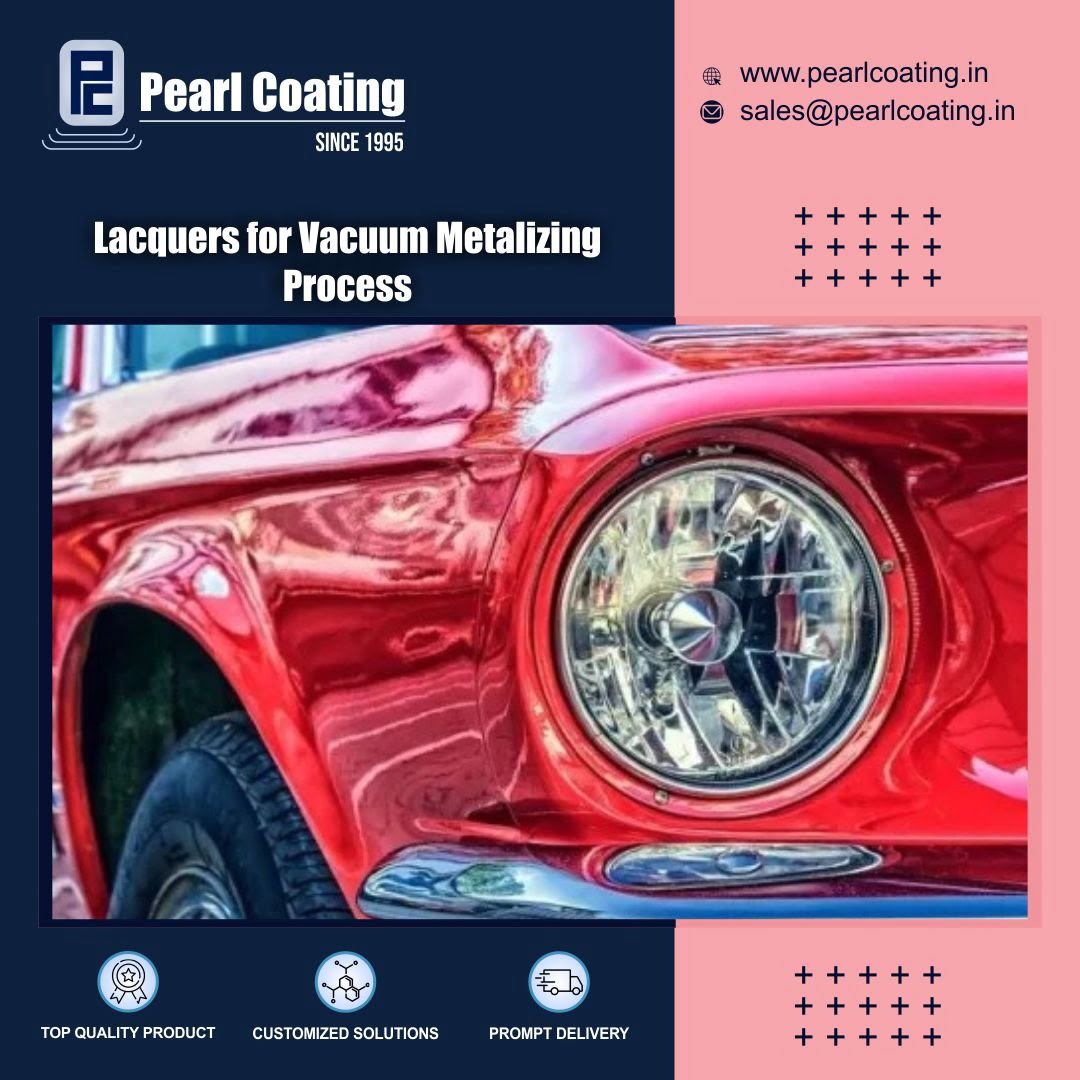Lacquers for Vacuum Metalizing Process
Thermal-cured lacquers are used for base coating in vacuum metalizing. The performance of the metallization greatly depends on the base coat lacquer. The Knowledge of the functions, limitations and proper usage of lacquers is essential to the metalize who wishes to use these lacquers.
Other basecoats are available, such as UV-cured and water-based coatings. Although some of these are becoming more popular because of solvent emission control regulations, solvent-based lacquer coatings are still the most widely used.
Thermal-cured lacquers
The basecoat is a lacquer that is applied to the surface of a part before metallization can be done. Basecoats serve two primary functions for the vacuum metallizer:
- Basecoats level out minor imperfections on the substrate, allowing for a smooth and mirror-like surface.
- Basecoats also promote the adhesion of the metalizing onto the substrate.

Key Elements of Lacquer Coating
All lacquer-type coatings are composed of three main ingredients:
Resin
Resin is also known as the solids of a coating. In a coating, the resin is a polymer that remains after drying. It depends on several factors, including the type of plastic the substrate is made of, which polymer is used in the coating
The percentage of solids in the liquid coating will affect the method of application and the cost per liter of the coating. Usually, the higher the percentage of solids in a coating, the more expensive it is.
Solvents
Solvents are used to carry and disperse the resin homogeneously. Multiple solvents may be combined to achieve the exact properties required for a particular job.
Solvents in the coating can be matched to the method of application and the substrate material and can be adjusted to optimize the wettability and adhesion of the coating
Additives
The final ingredients in a coating are additives. There are a variety of additives used in small quantities to fine-tune a coating’s properties. Additives can affect the flow and leveling, wettability, hardness, adhesion, and other properties of the coating.
Some basecoats are better than others for a specific job. Some of the desirable properties of a basecoat would be that it is as environmentally safe as possible, can be applied by a variety of methods, dries quickly and avoids runs, adheres well to an untreated substrate, promotes adhesion of the metalized layer, and provides gloss. Not all basecoats provide all of the properties equally.
It is the user’s responsibility to decide which of these factors are most important and choose a product accordingly. Listed here, however, are some of the more common coating problems and some suggested solutions:
- Poor Adhesion
Use additives to promote adhesion, reduce solids to thin the coating, increase bake time, and check the substrate surface for impurities such as oil, and dust.
- Poor Coverage
Increase solids, increase evaporation rate, and change the solvent mix to prevent runoff.
- Orange Peel
Reduce viscosity, use additive or retarder to reduce the evaporation rate, and use additive (surfactant) to reduce surface tension.
- Sags & Runs
Solvent too slow or viscosity too high, use temperature different from mix temperature, the coating applied too heavily or rotated inadequately.
- Dull Finish
Low-density area in a substrate, contaminated coating/solvent, solvent attacking substrate, basecoat too thin.
- Fish Eyes
Silicone or other contaminants on a substrate or in the coating, over-reduced paint, use of epoxy coatings.
Get in touch with us
Please contact us if you have any questions regarding vacuum metalizing or basecoats.
Email : sales@pearlcoating.in
Phone No: +91 9822068834.
